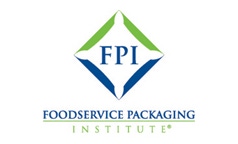March 25, 2016

When it comes to sustainability, it seems that recycling is preferable to compostable packaging materials. That is the latest finding from the Sustainable Packaging Study conducted by sister brand Packaging Digest. Packaging suppliers responding to the survey said that their customers (the brand owners) deemed recyclability as the most important environmental marketing claim. In total, 57% of brand owners and packaging suppliers preferred recyclability. For brand owners alone, 51% said they preferred recyclability.
Does that mean that companies working on developing compostable or biodegradable packaging are spinning their wheels? Not necessarily, as there will be some niche applications where compostable or biodegradable materials will have limited success. However, I’m of the opinion that what this means is that most packaging suppliers and brand owners alike don’t have a whole lot of confidence in the ability of compostability and biodegradability to provide a large-scale solution.
Recyclability, on the other hand, has the advantage of having a large infrastructure in place that can collect, sort and then market and sell recycled materials, which is appealing to the marketplace. It’s seen, I believe, as the optimal solution for a very challenging issue.
Recently the Foodservice Packaging Institute (FPI; Falls Church, VA) released a Recovery Toolkit, which provides free resources for recovering foodservice packaging, thanks to a multi-year effort with input from many stakeholders. “Recovering cups, containers, boxes, bags and other foodservice packaging is a topic of intense interest not only for consumers but also for the foodservice packaging supply chain and those in the recycling and composting industries,” said Lynn M. Dyer, FPI President. “We’ve created this toolkit to respond to the questions and needs of many different stakeholders involved in the recovery process.”
Developed by FPI’s Paper Recovery Alliance (PRA) and Plastics Recovery Group PRG), the toolkit is separated into different sections based on target audiences. For communities, material recovery facilities and end markets, the toolkit highlights studies done by the PRA and PRG, maps out potential end markets for recycled material and shares case studies of successful foodservice packaging recovery, said the FPI.
With help from the National Restaurant Association, a section was incorporated for foodservice operators, which offers step-by-step guidance for implementing an in-store recycling and/or composting program. Resources include free downloadable and customizable forms and templates, educational videos and a first-of-its-kind map highlighting recycling and composting policies that may impact foodservice operators in the United States and Canada.
While FPI’s information notes that this toolkit covers both recycling and composting guidance for foodservice items, recycling would seem to be the best choice given the widespread availability of recycling facilities. Commercial composting facilities, which are necessary to create composted materials in a way that can be reused in gardens, are less available, often requiring quite a drive to offload the materials for composting. That use of gasoline- or diesel-powered vehicles negates some of the “green” benefits, whether it’s recycled or composted; recycling centers, on the other hand, tend to be more centralized and more available.
With only 20% of the total respondents to Packaging Digest’s survey opting for “compostable” as important to their environmental marketing claims (only 9% of brand owners say this is important), it would seem that efforts to make materials—specifically plastics—compostable might not offer a good return on investment. Customer demand drives most successful businesses, as pull marketing works far better and requires fewer resources than push marketing. For anyone who is in business to make money (and that should be all of us), ROI is pretty important to the sustainability of the enterprise.
About the Author(s)
You May Also Like




